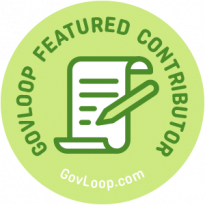We are living in a golden age of communication, where it’s never been easier to reach large audiences at the click of a button. But from my perspective, effective communication has never been harder. The sheer mass of information available about the latest scientific breakthroughs or the newest must-have technologies forces communicators to cut through noise and capture fleeting attention spans to help people understand what matters.

In my role as Director of Communications and Operations for the Government Accountability Office (GAO) Science, Technology Assessment, and Analytics (STAA) team, I help our scientists and technologists give Congress the information it needs to make forward-looking decisions on some of today’s most complex issues. To provide policymakers with practical, comprehensible, and useful information requires a delicate balancing act. Here are a few things we consider as we approach this challenge.
Balancing Our Audiences
When communicating about science and technology, our audience might be an individual policymaker or the American public. No matter the size, we have to understand the audience’s level of scientific awareness, their interest in the technology or its application, and the context in which they plan to use the information. To accomplish this, we have to balance the distinct and at times clashing cultures between the scientific community, Congress, and society at large.
Scientists may be more focused on communicating how a technology works, but need to know when to switch focus to gain policymaker attention. The busy policymaker, much like the public, needs to understand the basics immediately rather than attaining knowledge on a complex scientific subject. Relatedly, the policy maker is often attuned to the application of the technology and its impact on different social groups. In writing with policymakers and other stakeholders, we must consider tensions between professional cultures, between government agencies and, of course, between political ideologies.
Among the first steps of any communications planning process is an analysis of audience needs, but it’s important to consider who that audience is composed of — individual people. Rather than tip the information or opinion scales, our work should deftly strike a balance that provides information useful across cultures.
Balancing Depth
How we speak to an audience is just as important as who is in the audience. It doesn’t matter how much we know, care, or have invested in an audience if they can’t understand what we are saying. Balancing the depth of our approach to a topic helps us work smarter — not harder — to achieve our communications goals.
Communicating about science requires several shifts in mentality. From length to brevity, from complexity to simplicity, and from deep knowledge to practical use, we must craft a style that can distill years of scientific research into an easily digestible product. This product is often focused on the application of the research, and must reflect a clear understanding of the communities that might be advantaged — or disadvantaged — by its use.
Plain language must be our touchstone. This doesn’t necessarily mean we reduce complex science into a meme. Rather, we find balance between highly technical information and its relevance to our audience. None of this is easy, but to paraphrase Albert Einstein, if we can’t explain a topic simply, we don’t know it well enough.
In the current information landscape, trying to emerge from the fray with a clear and trustworthy voice reminds me of flipping a radio dial through channel after channel of static and finally finding a strong, clear signal and a good tune. Effective communication cuts through the noise. Just like learning to speak a different language, this is a skill that anyone can do with some practice — and a bit of balance.
Jessica Cobert Smith is Director of Communications and Operations for the Government Accountability Office (GAO) Science, Technology Assessment, and Analytics (STAA) team.





Leave a Reply
You must be logged in to post a comment.